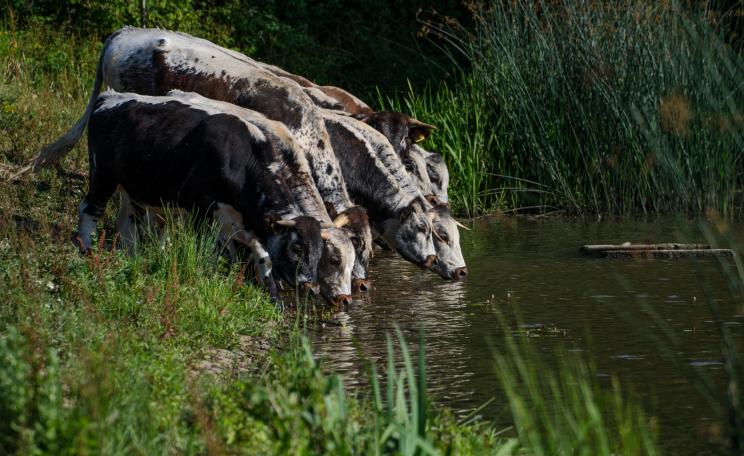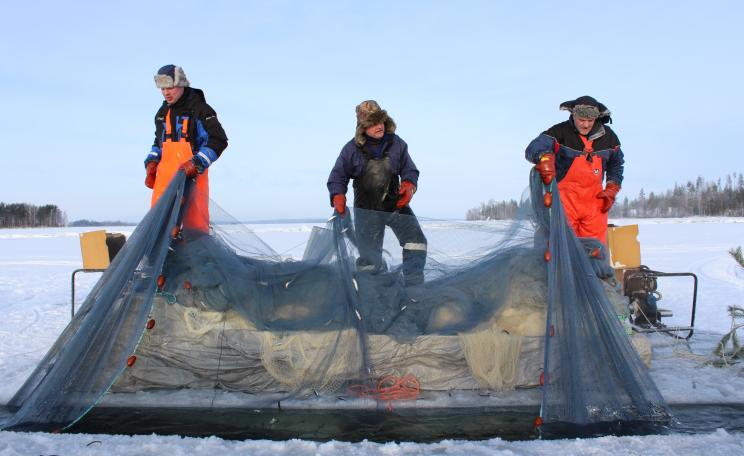Global shifts in species and whole ecosystems as a result of climate change should compel us to re-assess the nature of nature and take urgent steps to reform conservation.
Recent studies of ecosystem and climate change (1) reveal that species on land and sea are on the move, redistributed by shifts in the climate system.
These redistributions are unprecedented in their scale and cross-system reach. They are also having profound impacts on human well-being and global geo-politics. Nations are going to war over fishing grounds, the coffee belt is shifting north, as are many diseases and their vectors.
Despite the billions poured into global conservation initiatives every year, we are now experiencing a sixth mass extinction event and the collapse of many species.
Conservation, colonialism
This should give us pause to reflect and ask: how well equipped are these dominant conservation practices to respond to species shifts and the degradation of biological and cultural diversity? To answer this question, we must consider the historical origins of today’s dominant conservation practices.
Founded upon the preservation of natural landscapes and sites considered to be of high value, such as Yellowstone and the Serengeti, our current conservation ethic is a product of the Industrial Revolution and the expansion of ‘Western’ lifeways, rooted in farming and settlement, across the temperate regions of our planet (2).
This classical approach to the conservation of nature has focused on identifying, demarcating and policing iconic examples of ‘original nature’ to keep them intact for posterity.
Global shifts in species and whole ecosystems as a result of climate change should compel us to re-assess the nature of nature and take urgent steps to reform conservation.
These conservation actions have had, and continue to have, profound implications for the Maasai, Sámi, Native Americans and many other Indigenous peoples who have, for millennia, conserved their territories through sophisticated knowledge and governance systems. Seen in its full historical context, conservation, as understood from a Western perspective, has been a double-edged sword since its inception.
Despite rapidly accelerating environmental degradation, over the past century societies subscribing to this mainstream conservation ethic have continued to enact and entrench policies and conservation actions that accept the binary axis of ‘saving nature’ or ‘using nature’ (3). This imagined dichotomy has remained the dominant trend in nature discourses in mainstream societies. The recent emergence of ‘Half-Earth’ conservation proposals is a rich example of this.
Lessons from Chernobyl
In the 21st Century our understandings of what nature is have been enhanced by complex ecological discoveries, ecological disasters and the interlinkages of nature and Indigenous traditional knowledge (4). Combined, these discoveries, disasters and the re-appreciation of indigenous knowledge have demonstrated, for those willing to see and accept them, the weaknesses of the binary ‘use’ vs ‘conservation’ approach.
In Europe, the 1986 Chernobyl accident brought home the transboundary nature of environmental pollution, helping to foster further cooperation amongst European Union countries. And, as in the case of Chernobyl, we are now waking up to seismic, system-wide shifts in nature that require a reformative approach, both to global land uses and conservation methods.
Svetlana Alexievich, a Nobel prize-winning Belarusian journalist who has written extensively about Chernobyl (5), describes how the shock of the disaster led initially to critical rethinking about industrial progress and nature conservation. Nature, which had been carefully ‘othered’ in the parks and wildernesses of Europe, returned in the form of radioactive rains, ecosystem degradation and new health risks. The contamination spread across borders.
Alhough the totality of the Chernobyl disaster’s disordering shock has largely been forgotten, for Alexievich, Chernobyl was a civilizational watermark and a wake-up call to reflect on our understanding of nature from within the current downward spiral.
New realities, urgent reforms
Global shifts in species and whole ecosystems as a result of climate change compel us to re-assess the nature of nature and take urgent steps to reform nature conservation and human land use in a time of new realities (6).
Old ecological baselines are often meaningless today, as new food webs emerge and novel ecosystems displace age-old systems of biodiversity. Cultural diversity, especially in the context of Indigenous and traditional societies, is also transforming in relation to shifts in species, biodiversity and climate.
Those societies that express ‘non-global thoughts’ in their multiple, often endangered languages face existential threats, such as land-grabbing, mining and the collapse of ecosystems in their homelands. Global agreements on biodiversity and climate change are slow to tackle these problems and vulnerable to unexpected, violent shifts in policy, as we can see in the U.S.A today.
A reformative approach to land use, conservation and the preservation of both biological and cultural diversity must therefore fulfill multiple, simultaneous goals across scales.
Dynamic
First, this approach needs to be dynamic. Conservation actions must respond to the potential emergence of novel ecosystems that evolve from shifts in weather conditions and species redistributions.
These responses might take the form of resilience corridors and amorphic territorial shapes that challenge the old in-situ approach to delineating permanent protected areas.
Dynamic conservation areas may also be seasonal. For example, if and when the migration patterns of birds change, certain habitats need to be protected more strictly during the time when flocks of birds need them.
Endemic
Second, this new approach should respect, guarantee and honor the rights of Indigenous and local-traditional peoples, their endemic governance and land uses.
The emergence and recognition of Indigenous- and community-conserved areas (ICCAs) embodies this approach.
ICCAs have the potential to support and create large territories of protected areas that allow a given Indigenous people or a community the time, scale and space to survive and to conserve their ecosystems in the midst of transformative changes.
Re-wilded
Thirdly and lastly, we need to address the issue of degraded and ‘lost’ lands, especially in the context of land abandonment and urbanisation. Even at their most ambitious, the emission cuts currently proposed by the world’s governments will not be sufficient to meaningfully avert the climate crisis.
The preservation of existing carbon sinks, especially in the Arctic, where large, relatively-intact territories can still be found, is of global significance. But equally important are those large-scale areas where natural values have been lost.
These ‘lost lands’ contain tremendous potential for re-wilding. If lands that have lost their natural richness due to human activity are re-wilded and given space to recover, or in the case of Indigenous and local-traditional communities, to be governed and nurtured by their traditional and original owners, they can emerge as new carbon sinks and safe havens for a range of species, especially birds.
Successes are already emerging around the planet. In the European North, the boreal forest can make a relatively-fast recovery if spared industrial logging and other land use pressures. As seen in Eastern Finland, marshmires that have been drained can be rewetted to create prime habitats for wading birds and duck species, as natural ecosystem succession converts them back to carbon sinks.
And, as demonstrated by the the Elwha catchment area's revival in the Pacific Northwest of the USA (8), the removal of hydro-power stations from salmon rivers can re-establish the nutrient flows between the coastal rainforest and the ocean, bringing interconnected eco-systems back to life.
These Authors
Dr Tero Mustonen - a passionate defender of traditional worldview and cosmology of his people, is a Finn and head of the village of Selkie in North Karelia, Finland. Professionally, he works for the Snowchange Cooperative, a non-profit organization based in Finland with members across the Arctic, including the communities of Eastern Sámi, Chukchi, Yukaghir and many more. Mustonen is well-known scholar of Arctic biodiversity, climate change and indigenous issues.
Professor Ari Lehtinen - is Professor of Geography at the University of Eastern Finland where his research and teaching focus is on the politics of forests in the age of globalisation, urban renewal and environmental change. In his work Ari examines the ongoing multiscalar internationalisation of the forest industry by analysing and comparing the profiles of major companies.
References
1. G. T. Pecl et al., Biodiversity redistribution under climate change: Impacts on ecosystems and human well-being, Science 355, 6332 (2017).
2.A. W. Crosby, Ecological imperialism. The Ecological Expansion of Europe, 900–1900 (Cambridge University Press, Cambridge, 1986).
4.G. Raygorodetsky, Vivir al límite, National Geographic 41, 5 (2017)
5.Alexievich, Svetlana. Voices from Chernobyl: The Oral History of a Nuclear Disaster (Macmillan, London 2006)
6.T. Bonebrake et al., Managing consequences of climate-driven species redistribution requires integration of ecology, conservation and social science, Biological Reviews, https://doi.org/10.1111/brv.12344(2017)
7.Tonra, C. et al., The rapid return of marine-derived nutrients to a freshwater food web following dam removal, Biological Conservation 192 (2015) 130–134






